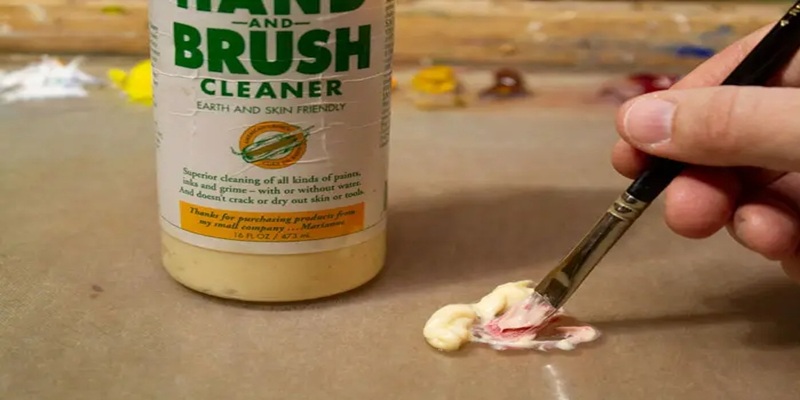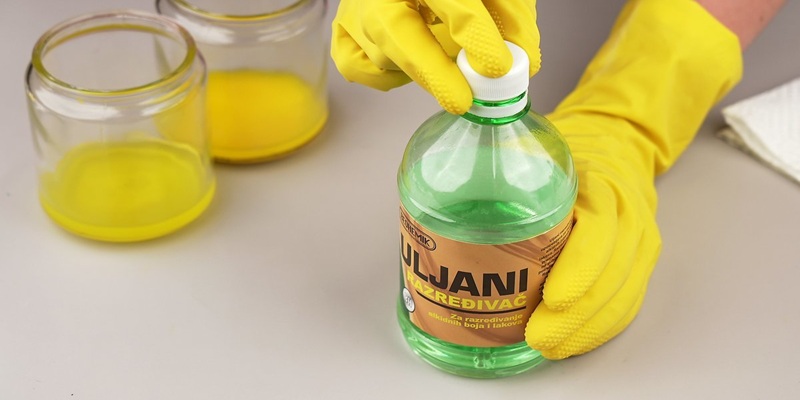How Do You Clean Oil Paint Brushes
Proper maintenance ensures the longevity and performance of oil paint brushes. Using the right solvents and cleaning tools is key to preserving their quality. This guide covers how do you clean oil paint brushes, providing essential steps and tips to keep them in top condition for successful creative projects.
Proper maintenance ensures the longevity and performance of oil paint brushes. Using the right solvents and cleaning tools is key to preserving their quality. This guide covers how do you clean oil paint brushes, providing essential steps and tips to keep them in top condition for successful creative projects.

Understanding Oil Paint
Oil paint’s rich texture and slow-drying nature enable intricate blending, but its composition requires careful brush maintenance. Without proper cleaning, bristles can stiffen, lose shape, and accumulate residue, leading to uneven strokes and a reduced brush lifespan.
Mastering the correct cleaning methods is paramount for maintaining oil paint brushes. Effective cleaning preserves bristle integrity, enhances painting quality, and extends tool longevity. People who dedicate time to proper brush care ensure consistent performance and more rewarding creative experiences..
Tools And Materials Needed For Cleaning
To ensure the effective cleaning and maintenance of your oil paint brushes, you’ll need several essential supplies that facilitate this process:
1. Paint Thinner or Mineral Spirits: These solvents are indispensable for breaking down the oil-based paint residue on your brushes. They aid in dissolving paint particles, making it easier to eliminate stubborn stains without harming the bristles.
2. Soap (Natural or Biodegradable): A gentle soap is crucial for the final cleaning phase. Opt for a natural or biodegradable product to guarantee environmental safety while removing leftover paint and oils, ensuring your brushes are clean and soft.
3. Dedicated Container for Brush Cleaning: Utilize a separate container for the paint thinner or mineral spirits to prevent cross-contamination with other cleaning solutions. This practice ensures solvent integrity and keeps your workspace orderly.
4. Protective Gloves and Mask: Paint thinners can produce strong fumes and irritate the skin, so wearing gloves and a mask is vital for safety. They protect you from harmful chemicals and enhance the overall cleaning experience.
5. Paper Towels or Rags: Paper towels or rags are handy for wiping off excess paint from your brushes during the cleaning process. They also facilitate the easy disposal of paint residue, contributing to a clean workspace.
Each tool plays a significant role in ensuring that your oil paint brushes are thoroughly cleaned and preserved for upcoming use, essential for achieving outstanding outcomes in your painting endeavours.

Step-By-Step Guide To Cleaning Oil Paint Brushes
Step 1: Remove Excess Paint
The first and foremost step in cleaning is removing excess paint from the brush bristles. Begin by scraping the brush against the edge of your paint can or palette to dislodge as much paint as possible. For a more thorough removal, you might consider using a palette knife—gently glide the blade along the bristles, taking care not to damage them. Alternatively, you can rub the brush on a clean rag to absorb any remaining paint. This critical initial step prevents paint from hardening, complicating future cleaning efforts.
Step 2: Rinse with Paint Thinner
Proceed to the deep-cleaning phase of your brushes using mineral spirits or paint thinner. Pour the thinner into a flat container, allowing enough liquid to submerge the bristles while keeping the ferrule dry to avoid loosening the glue. Dip the brush into the thinner and gently swirl it around, releasing any stubborn paint stuck to the bristles. Always ensure you're working in a well-ventilated area and, if necessary, wear gloves and a mask to protect against fumes. After cleaning, pour the used thinner into a secure container for disposal—never pour it down the drain, as it can damage the environment. Adhere to local waste management guidelines for safe disposal procedures.
Step 3: Wash with Soap
Once the bulk of the paint has been removed, move on to the next cleaning stage. Gently rinse the brush under warm water, then add a few drops of mild soap or brush cleaner directly onto the bristles. Work the soap into the bristles with your fingers or a specialized brush-cleaning tool, generating a lather that reaches the base of the bristles. This step is essential for breaking down any remaining residue and maintaining the quality and integrity of your brush for your next painting session.
Step 4: Rinse and Shape
After washing, rinse the brush thoroughly under clean running water until the rinse water runs clear and free of soap. Gently shake off any excess water, then reshape the bristles with your fingers, returning them to their original form. Proper reshaping ensures the bristles dry without becoming misshapen, which could hinder their efficacy during future painting sessions. Maintaining brushes in this manner prolongs their life and guarantees optimal performance in your artistic pursuits.
Tips For Keeping Brushes In Top Condition
To keep oil paint brushes in peak condition, clean them immediately after use. Dried paint can cause irreversible damage, so use proper cleaning agents like brush cleaners or odourless mineral spirits instead of harsh chemicals that may degrade the bristles.
Proper storage is also crucial. Store brushes upright or hang them to prevent bending, and use a protective case if possible. Avoid laying them flat, as this can deform the bristles over time.
Avoid common mistakes like overcrowding brushes or using improper cleaning solutions. Always rinse thoroughly until the water runs clear. Prioritizing cleanliness and storage preserves brush integrity, ensuring consistent performance and exceptional painting results.
Embracing Proper Brush Care For Artistic Fulfillment
Maintaining oil paint brushes is vital for extending their lifespan while ensuring optimal results in your home and garden painting endeavours. Integrating effective cleaning habits—like thorough rinsing, gentle soap application, and careful drying—into your routine will protect your investment and elevate the quality of your work. Regular care is an indispensable component of your painting approach, empowering you to achieve exceptional finishes with each stroke. By making these practices habitual, your brushes will reward you with remarkable performance for many years.



